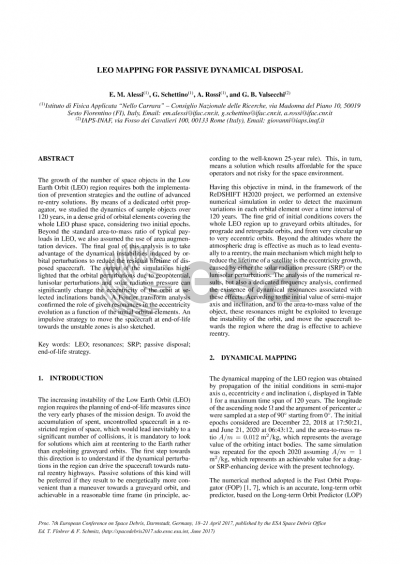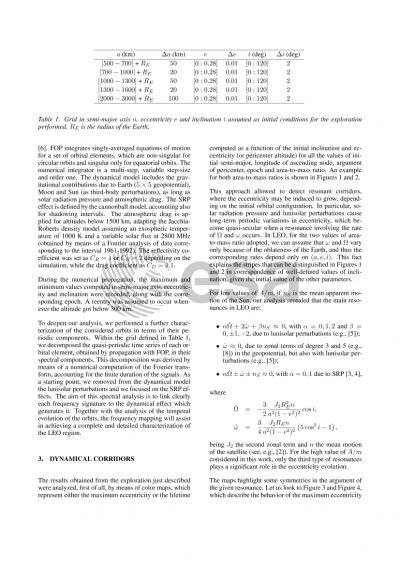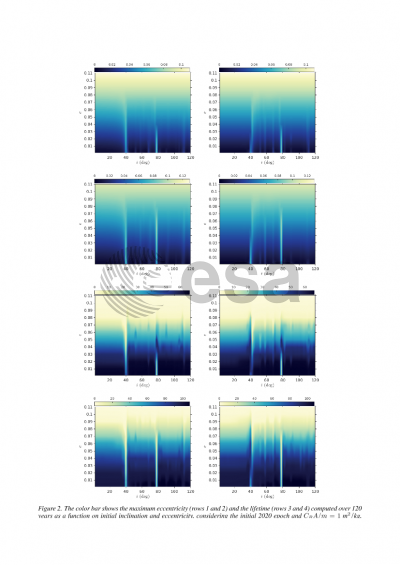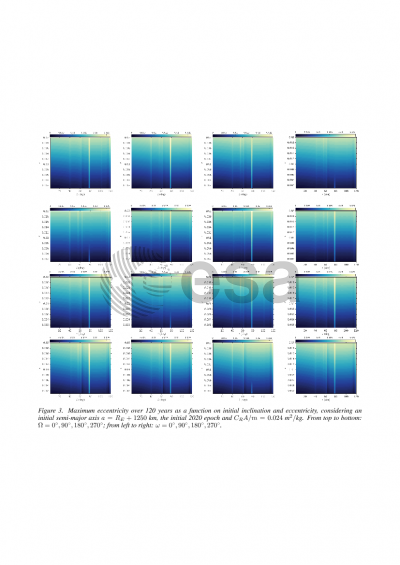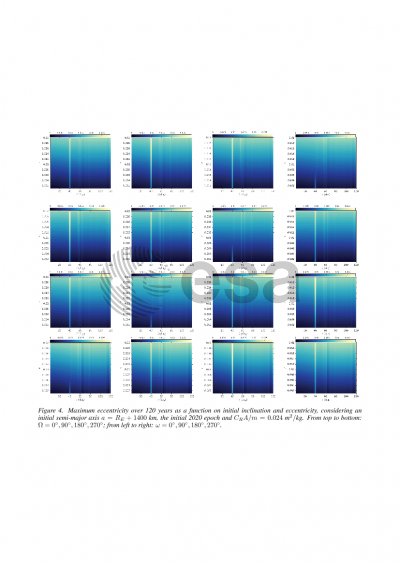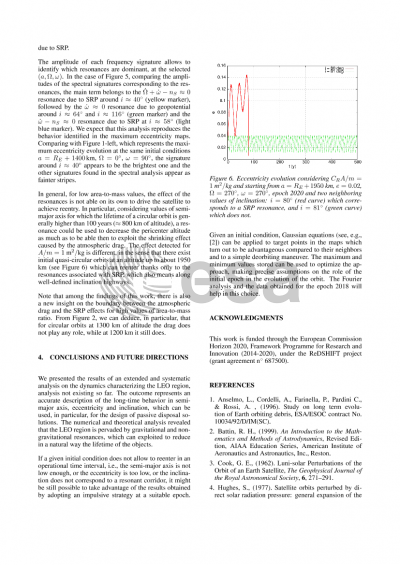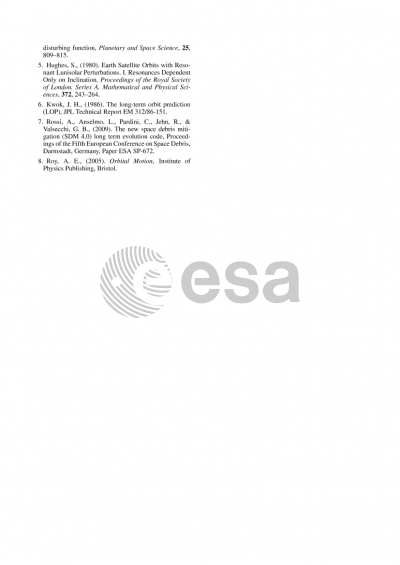Document details

Abstract
The growth of the number of space objects in the Low Earth
Orbit (LEO) region requires both the implementation of prevention
strategies and the outline of advanced re-entry solutions. A detailed
mapping and analysis of this highly populated region around the Earth, at
altitudes between 500 and 3000 km on the Earth surface, was performed.
The final goal of this analysis is to take advantage of the
dynamical instabilities induced by orbital perturbations to reduce the residual
lifetime of disposed spacecraft.
By means of a dedicated orbit propagator, we studied the
dynamics of sample objects over 120 years, in a dense grid in the
orbital elements covering the whole LEO phase space. Two
values of the initial epoch, to account for different configurations of the
Sun-Earth-Moon system, were considered.
Within the grid a special focus was put on the most populated regions, mainly at 700-1000 and
1300-1600 km of altitude.
The dynamical model considers the geopotential up to degree and order 5,
the atmospheric drag, the effects of solar radiation pressure (SRP) and of
lunisolar perturbations.
We found dynamical instabilities at ``critical'' inclinations caused by the combined effects
of the geopotential, lunisolar perturbations and SRP. The output
of the simulations highlighted that, at specific combinations of right ascension of the
ascending node and argument of perigee, the above mentioned orbital
perturbations can significantly reduce the debris lifetime at selected
inclinations bands. We present a discussion on the physical causes for the instabilities
corresponding to 40-42 deg and 56, 64, 116 deg of inclination.
Beyond the standard area-to-mass ratio of typical payloads in LEO, we
also repeated the whole set of simulations assuming the use of area augmentation
devices (e.g., solar and drag sails).
We further deepened our analysis introducing chaos indicators to outline
a detailed map of the distribution of regular and chaotic regions in LEO.
Finally, we complemented this study with
the support of a Fourier spectral analysis of the evolution of
eccentricity and inclination of the objects.
The orbital maneuvers needed to move the spacecraft at end-of-life
towards the unstable zones identified in the maps were computed.
It is shown how this global strategy of passive dynamical disposal can assist in
globally complying with the 25-years rule for re-entry.
This study was performed in the framework of the Horizon 2020 project "ReDSHIFT".
Preview
